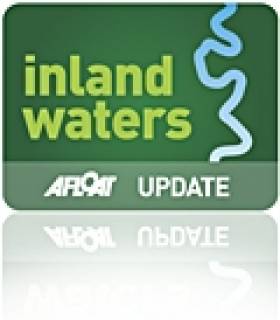Displaying items by tag: Monasterevin
Grand Canal: Barrow Line Reopening to Navigation at Monasterevin Soon as Bell Harbour Works Continue
Waterways Ireland advises masters and owners of vessels on the Grand Canal that the Barrow Line from Lock 24 (McCartney’s) to Lock 25 (Moores) will reopen to navigation on Thursday 28 March following essential quay wall refurbishment at Bell Harbour in Monasterevin.
Localised quay wall restrictions will remain within Bell Harbour to facilitate ongoing paving and landscaping works, and vessels navigating within the harbour are asked to proceed with caution, the cross-border body for Ireland’s inland waterways adds.
Waterways Ireland advises masters of all craft on the Grand Canal that the lifting bridge at Monasterevin on the Barrow Line will be closed for canal traffic on Thursday 24 August only to facilitate emergency road repairs. The bridge will return to normal operations on Friday 25 August.
Barrow Line: Reduction of Water Levels for Essential Bank Repairs at Monasterevin
Waterways Ireland advises masters of vessels in Monasterevin’s Bell Harbour and all masters of vessels and users of the Grand Canal’s Barrow Line that water levels in the canal will be reduced by approximately 600mm between the 24th Lock at Ballykelly and the 25th Lock in Monasterevin for essential bank repair works.
Reduction of levels will commence at 9am on Monday 28th November and will last until Friday 2 December, the cross-border body for Ireland’s inland waterways adds.
Waterways Ireland advises masters and owners of vessels that due to technical difficulties, the lifting bridge on the Grand Canal’s Barrow Line at Monasterevin cannot currently be opened for navigation traffic.
Staff are working to put the bridge back in operation, and the cross-border body for Ireland’s inland waterways says it hopes to issue an update by the coming weekend.
Barrow Line of the Grand Canal Closes for Repairs
Waterways Ireland say the closure is required to carry our essential maintenance on the lock gates and chamber.





























































